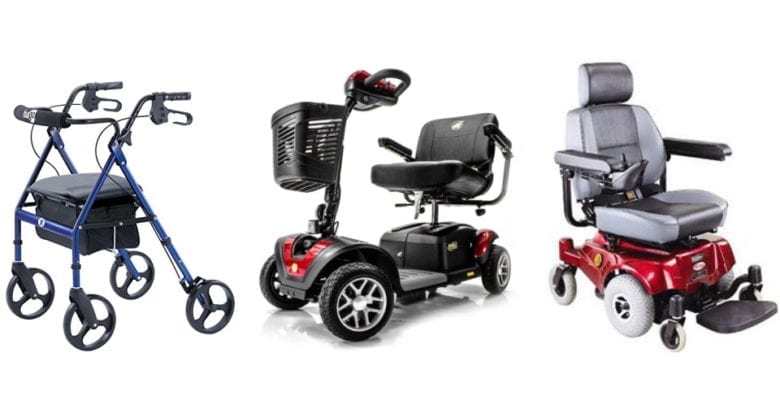
Our Editors independently research, test, and rate what we feel are the best products. We use affiliate links and may receive a small commission on purchases.
After surgery, our bodies need time to recover. This means we often require assistance with mobility. However, there is a necessary balance.
We need assistance that prevents us from causing damage to our recovering bodies. But at the same time, we must exercise our bodies to help with the recovery process and prevent muscle atrophy and stiffening joints.
Fortunately, there are a wide range of post-operative options for mobility. And we can swap from one kind of mobility aid to another as our recovery progresses.
Immediately after surgery, we may be restricted to being moved around in a wheelchair pushed by a medical professional, friend, or family member.
But after a few weeks, we may be capable of moving by ourselves with the assistance of a more flexible mobility aid.
Walking Sticks
If your mobility has not been greatly impaired by your surgery, you may be able to walk with the assistance of a walking stick or cane.
Many keen hikers make use of walking sticks to aid their walking gait. They have the advantage of being low weight and portable.
However, walking sticks cannot provide a great deal of support for serious foot or leg injuries where the recovering patient cannot place much weight on their foot. And they provide minimal assistance to balance.
Crutches
The next step up from a walking stick is a pair of crutches. These offer much more support and stability than a simple cane. Modern crutches fall into one of two styles: auxiliary and forearm.
Axillary crutches are those with a pad pressing against your armpit and grips at waist height. Forearm crutches, or Canadian crutches, have cuffs that fit around the user’s forearm.
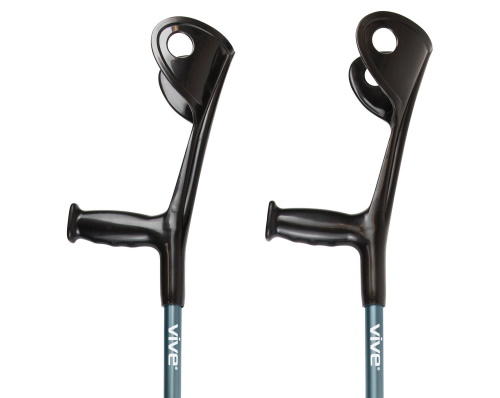
Generally, axillary crutches offer greater stability but are harder on the user’s arms and back.
The greatest disadvantage of crutches is that they require a large amount of upper body strength. Also, while they offer more support than a walking stick, they don’t offer complete support.
Users often experience falls while using crutches. For these reasons, they are not suitable for everyone. Seniors and heavier patients will require more assistance.
An alternative kind of crutch is a leg support or knee crutch. These are only useful for injuries involving one of your lower legs and not the knee.
The damaged limb is strapped into the knee crutch which then acts much like a prosthetic lower leg. The biggest advantage of a knee crutch is that it does not require the use of your hands.
It allows you to use the rest of your limbs in a normal fashion thereby minimizing leg muscle atrophy.
Walking Frames & Rollators
Walking frames provide a much more stable platform than crutches for anyone with mobility problems. While their use is often associated with seniors, they are used by a wide variety of patients recovering from surgery and are available in children’s sizes.
Walking frames are generally lightweight to make them easier for patients to use. Four points of contact with the ground make them unlikely to topple, unlike a crutch.
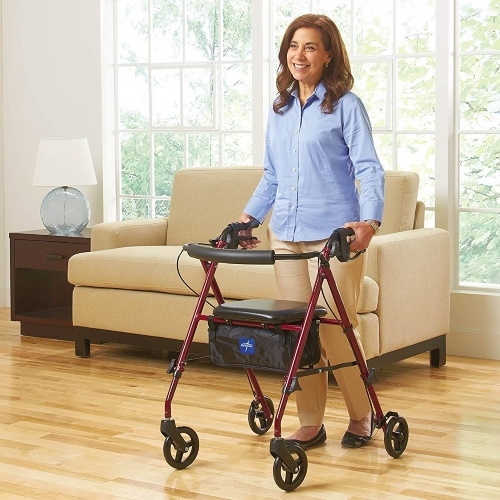
Walking frames designed for children are described as pediatric and for larger patients bariatric.
The most advanced kind of walking frame is the rollator. This comes with three or four large wheels for greater mobility. It also features handlebars with brakes for greater grip and maneuverability.
A built-in seat allows the user to stop and have a rest. Some rollators have built-in shopping baskets which can prove useful for trips to the store.
Knee Walkers
Perhaps the strangest mobility aid to enter the market in recent years is the knee walker. These look a little like a child’s scooter and are designed to allow the user to rest one leg while fully utilizing the other.
Knee walkers facilitate more rapid movement than a walker or rollator. And like with a walker, they often come with a handy shopping basket.
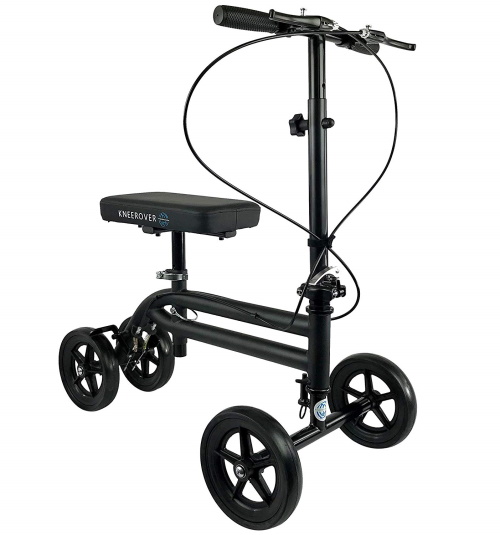
However, knee walkers are usually not suitable for people with knee injuries. When you use a knee walker, you must place pressure on your knee, which can cause further damage.
They are also often less beneficial to the recovery process than other mobility aids, such as knee crutches. This is because they encourage the user to stop using the affected limb altogether.
Wheelchairs
In some cases, you may not be able to use your legs at all following surgery. In such situations, you may need to use a wheelchair.
However, you should be aware that there are a wide range of different wheelchairs on the market and it’s important to choose one that’s suitable for you.
Your physical therapist should be able to guide you through the choice process to ensure that you get one that’s the right size and style for you.
Some wheelchairs are designed for easy transportation for people often on the move. These tend to be lightweight and fold easily for storage.
Even so, you should ensure that they still offer such features as a comfy foam seat and padded back. And adjustable leg rests are a must.
Some wheelchairs are designed to be pushed by a medical professional or friend while others are built to make it easier for the user to push themselves around. And, of course, you’ll have seen the specialist sports models used by Paralympians in team sports and races.
Powered Wheelchairs
Sometimes users require more independence. Powered wheelchairs give them that little extra help to get where they want to go without assistance from another person.
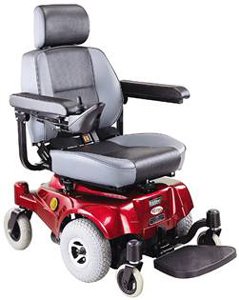
Children can use pediatric wheelchairs, and larger users may utilize bariatric wheelchairs. Quality electric wheelchairs often have extra features, such as oxygen tank holders and elevating leg rests.
Luxury models can look like a cross between mobile armchairs and airline chairs, with headrests, armrests, and cupholders.
Mobility Scooters
In some situations, your loss of mobility may become permanent. You may be able to walk short distances but walking to the store is not an option.
Most of us take our independence and mobility for granted. However, the CDC reports that 17.1 million adults in the US experience difficulties walking over ¼ of a mile.
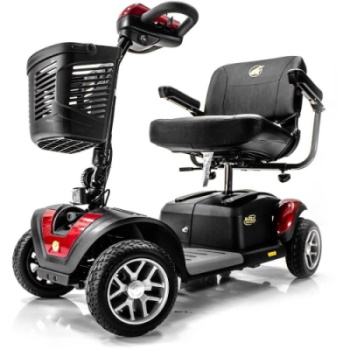
Mobility scooters can dramatically improve the lifestyle of anyone incapable of walking to the store, local library, or their office and give them back their sense of independence.
If you cannot walk to your favorite restaurant or club without assistance, the use of a mobility scooter can significantly improve your quality of life and independence.
Mobility scooters are far more robust than electric wheelchairs and come with extra features like fitted shopping baskets and headlights for night use.
Stairlift
In an ideal world, anyone with mobility problems will live in a single level home. However, you may live in a multi-floor family home that you do not wish to leave.
If you cannot stay on one level, a stairlift may become essential. This is a machine that moves a platform or chair along a rail to move you up and down an existing staircase.
If money and space are not too limited, you can even consider installing a through-floor wheelchair lift in your home.
Around Your Home
If your mobility is seriously restricted on a long-term basis, there are lots of ways in which you can make your life easier around your home.
In the bathroom, a shower chair or shower stool is invaluable when you take a shower. Grab rails around the shower, bathtub, and toilet make it easier for you to move from your wheelchair to where you need to be.
If you find it difficult to bend, a toilet seat raiser will be useful and a long-handled sponge essential.
For the bedroom, you can purchase Reachers to retrieve things without bending. Sock Aids and Shoehorns will help with your feet.
Notice:
HealthWellness365 is a participant in the Amazon Services LLC Associates Program, an affiliate advertising program. HealthWellness365 earns fees from products sold through qualifying purchases by linking to Amazon.com. Amazon offers a commission on products sold through their affiliate links.In March 2019 Amazon announced that Health Savings Accounts and Flexible Spending Accounts (HSA/FSA) would be accepted as new forms of payment for eligible product purchases. Using HSA/FSA funds to purchase on Amazon can be a great way to reduce taxes and reduce overall healthcare costs for items not covered under medical insurance. Users of such medical savings plans are issued a debit card by their provider, which can be added to their payment methods in their Amazon account.
Whether items sold on Amazon are deemed as eligible for HSA/FSA plans remains the responsibility of the buyer and their particular health plan provider. It’s ultimately up to the IRS and participating health plan providers to deem which medical and health products are considered eligible for the payment plans.
But the eligibility is quite broad and inclusive of thousands of products that are sold on Amazon and considered Health Savings and Flexible Spending Accounts plan-eligible. See this IRS document for more information about Health Savings and Flexible Spending Accounts: https://www.irs.gov/pub/irs-pdf/p969.pdf
